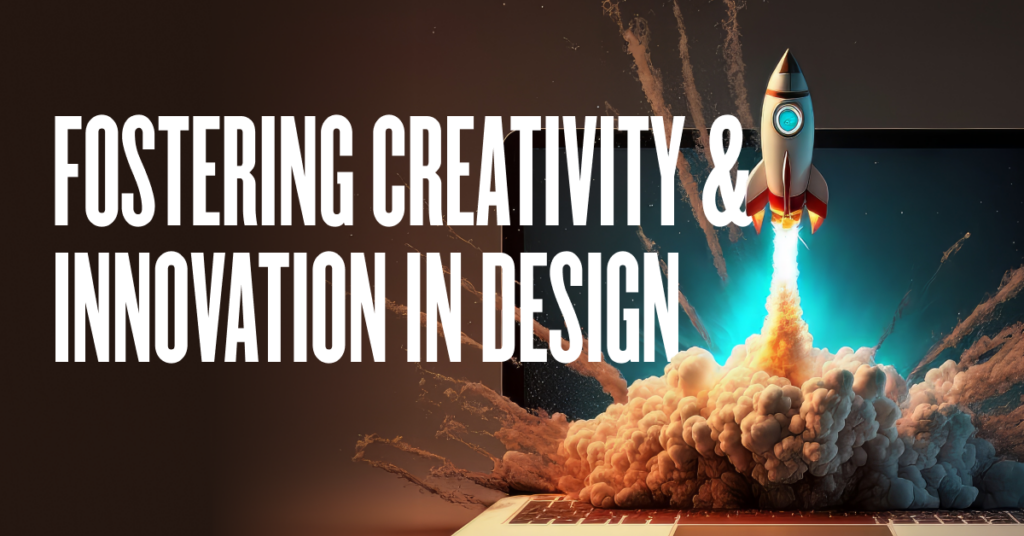
For businesses to stay ahead of the curve, the ability to quickly and effectively implement new ideas is crucial. This has been a core component to how we operate since 2009, and here are some of the ways we have met that challenge in the fast-paced world of digital product development. You may find some examples here to help your team unlock their full potential and drive real results.
Encourage Collaboration and Communication
Collaboration and communication are critical components of successful design innovation. When team members work together and share their ideas openly, they are more likely to come up with innovative solutions. Since Covid, our organization has been 100% remote. This may change in the future but for now, a little extra effort and tolerance must be spent on web communication. Still, there is no substitute for getting together in person and sharing deep, thoughtful discussion. We host meetups for brainstorming over coffee, after-work get-togethers to have a drink, and the occasional meeting-room lunch delivery to encourage everybody in the same space, sharing ideas. If you’re still short on collaboration, you may consider occasional team-building exercises like retreats, laser-tag, picnics out of the office, etc. It’s amazing what new inspiration can be achieved by a simple change of scenery.
Provide Access to Education and Training
Finally, to foster a culture of creativity and innovation, it’s essential to provide your team with access to education and training opportunities. This is often overlooked in creative circles, perhaps because people have a misconception that “right-brain people” are born creative and just utilizing their talents. This is wrong, we are all creative and there is not one group with a monopoly on the act of creating. All of our most creative employees follow other designers, artists, engineering trends, and generally like to read. A general curiosity and thirst for problems to solve seem to be paramount to being a good creative. After that, it just comes down to combining one’s cognitive abilities with knowledge & experiences for inspiration to “hit.” For example, AI systems like ChatGPT can be called, “creative,” since they can generate new non-existing content. Like ChatGPT, our ideas and outputs are based on our compute power combined with the experience of training on existing material knowledge. Philosophers can argue about the involvement of Free Will, but one thing seems certain to us. When people gain knowledge and experiences, their ideas improve as well. So, it’s important for employees to gain knowledge & experiences outside of the work environment. Set aside time and resources for employees to attend conferences, workshops, or training programs. Alternatively, you might offer a company book club, or internal training to help junior team members build new skills and everyone to stay up to date with the latest trends and best practices.
Encourage Diversity of Ideas
Unlocking the true potential of the human mind means getting out of our own head, and merging thought with others who think differently. Fostering a creative work environment includes a more long-term commitment to involving people of different backgrounds, cultures, seniority, identities, and ideas on equal footing. When a team is made up of individuals with different backgrounds, perspectives, and skill sets, ideas tend to flow more freely than in homogenous groups. To foster a culture that values diversity and inclusion, make an effort to recruit and retain employees from a variety of backgrounds. And once you’ve built a diverse team, make sure to provide opportunities for all team members to feel safe enough atmosphere to share their ideas and perspectives openly, participating in rigorous debate, challenging other team members to think deeply.
Empower Your Team
“New ideas” are inherently unsafe and untested. When team members feel empowered, they are more likely to take risks and come up with new ideas. This means giving your team the autonomy to make decisions about how to approach their work, as well as providing them with the resources and support they need to be successful. Start by empowering a small cross-disciplinary team to self-manage an individual project. Be clear with the project goals, and provide feedback. A truly autonomous team doesn’t need daily oversight, or rules. Remember, there are known links between psychological empowerment and improved task performance.
In today’s fast-paced world of digital product development, creativity and innovation are essential ingredients for success, which requires dedication to collaboration and communication, providing access to education and training, diversity of thought, and empowering your team. By embracing this, you can create a culture that values innovation and drives real results. With these strategies in place, your team will be better equipped to tackle complex problems and develop solutions that truly push the boundaries of what’s possible.
